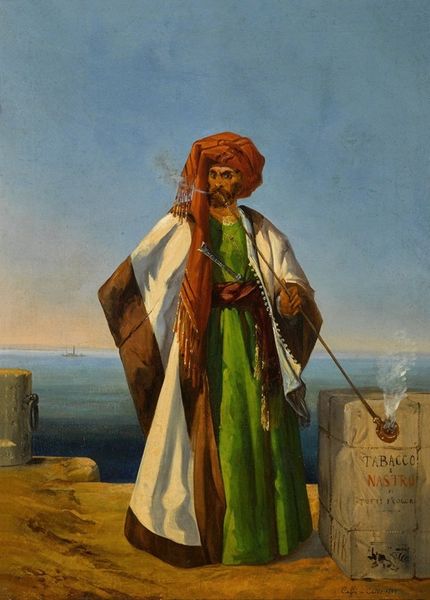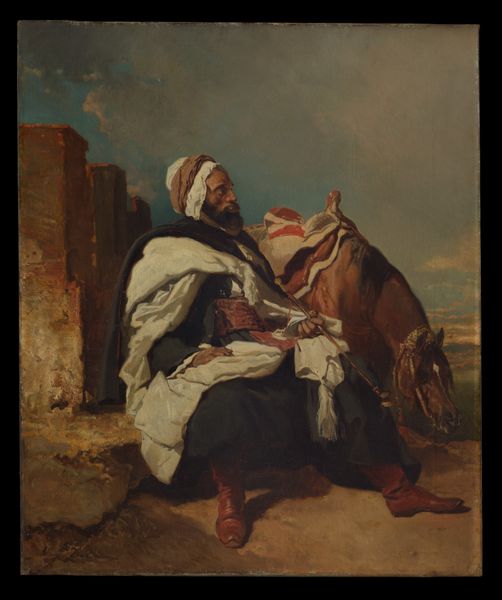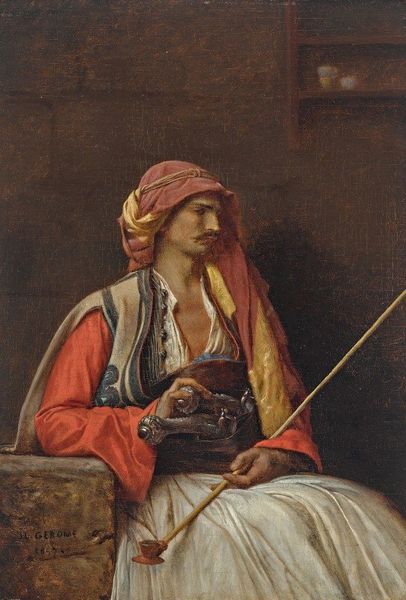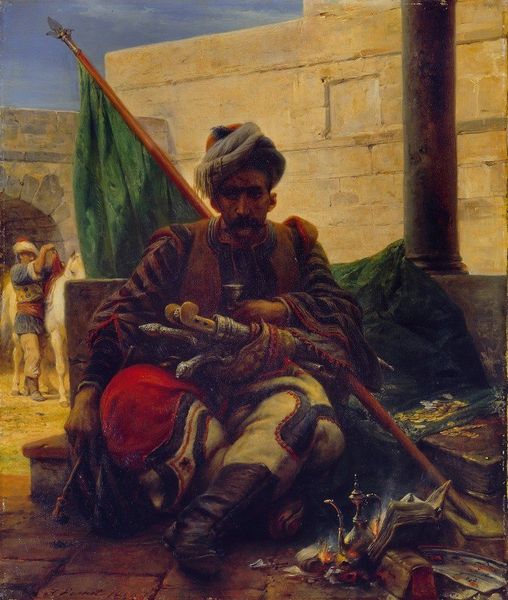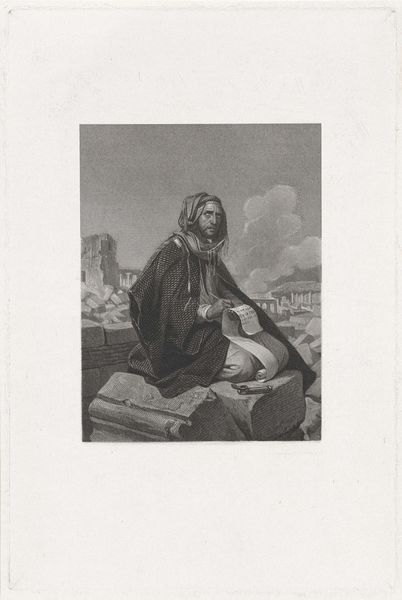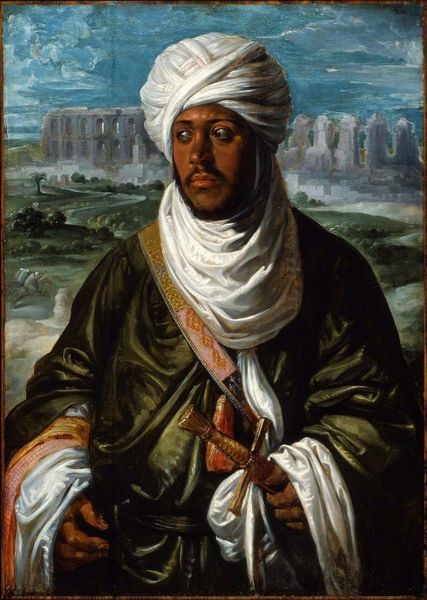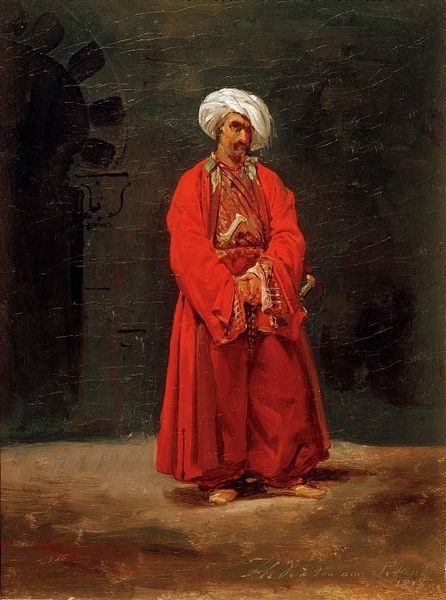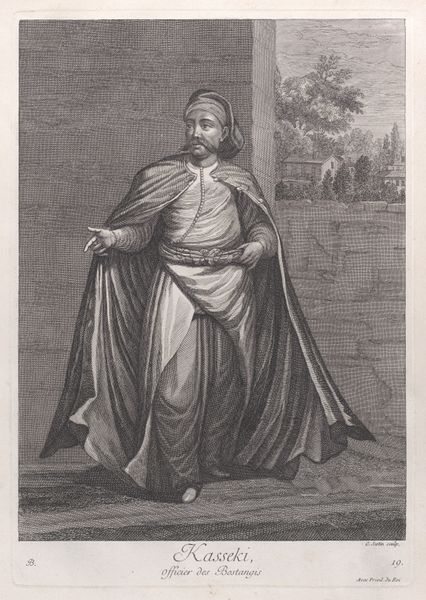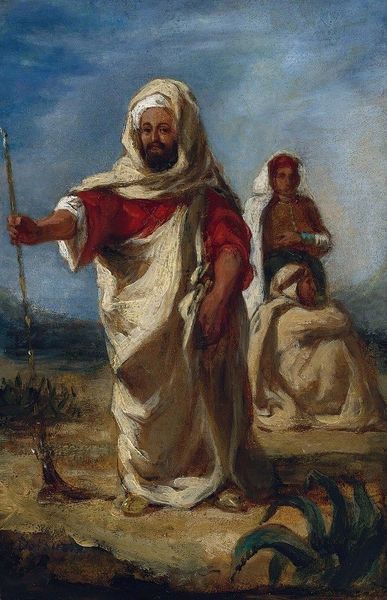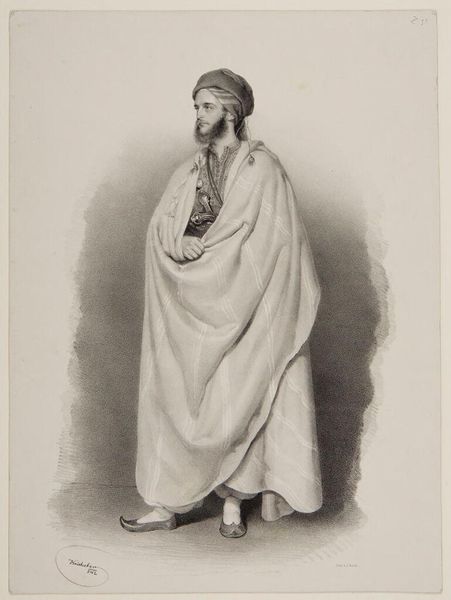
painting, oil-paint
#
portrait
#
narrative-art
#
painting
#
oil-paint
#
landscape
#
oil painting
#
romanticism
#
history-painting
#
academic-art
Copyright: Public Domain: Artvee
Horace Vernet painted Jeremiah on the Ruins of Jerusalem with oils on canvas, a traditional pairing of materials for historical paintings. The fine weave of the canvas supports delicate, almost photographic details, especially in Jeremiah's face. As a result, the viewer focuses on his features rather than on the rubble surrounding him. The artist here is engaging with the tradition of easel painting. However, the image's power is in the contrast between the care invested in the figure, and the generalized background of the painting. One might even say that Jeremiah, and the scroll he is writing on, stand in for the painting itself, implying that culture is more lasting than any architectural construction. This distinction invites consideration of the labor, politics, and consumption involved in production processes. By emphasizing materials, making, and context, we begin to understand the artwork's full meaning, challenging traditional distinctions between fine art and craft.
Comments
No comments
Be the first to comment and join the conversation on the ultimate creative platform.
